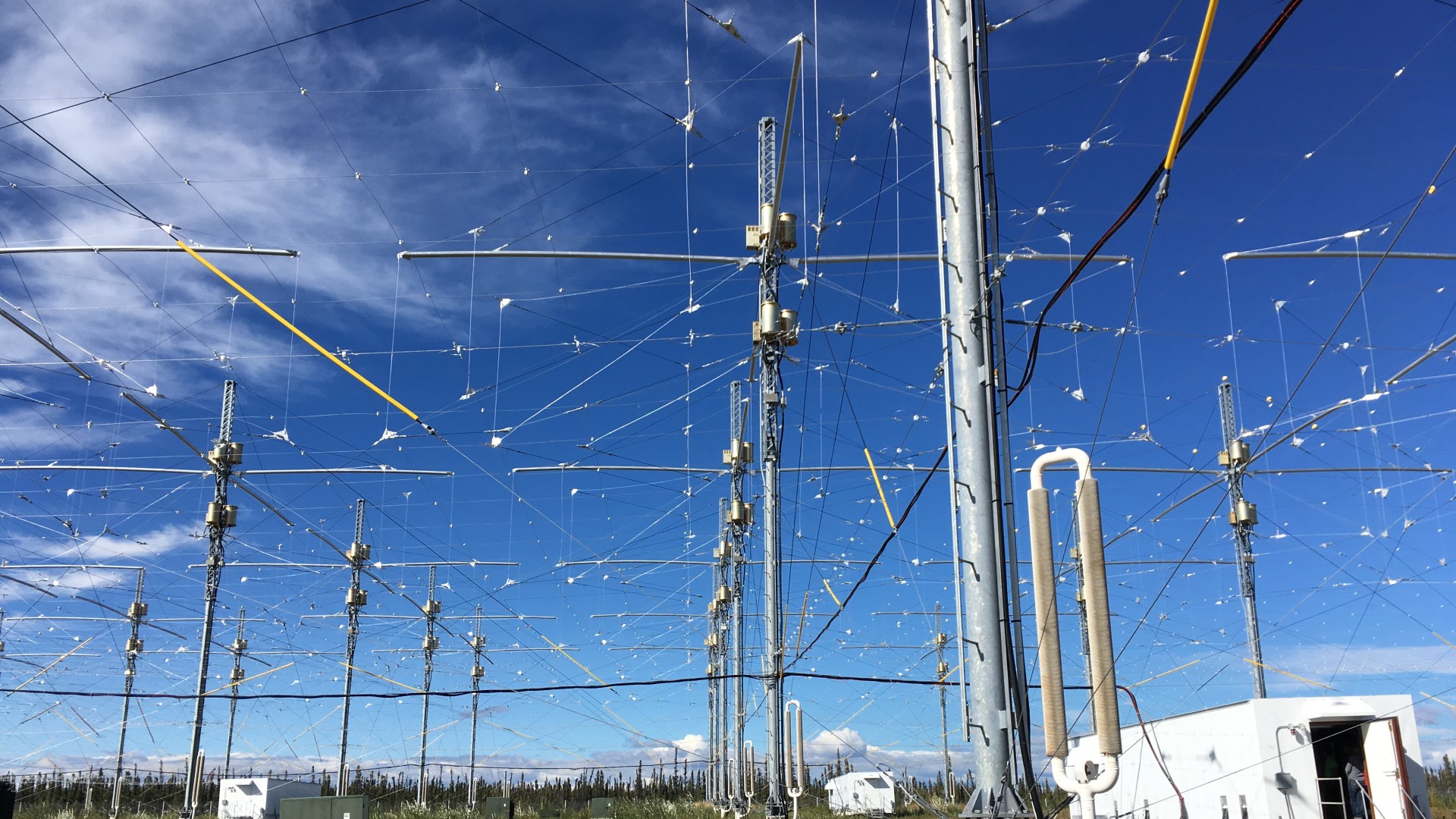Scientists just tried to see inside an asteroid with radio waves from this HAARP array
Some people think HAARP was built to trigger natural disasters, but it may, in fact, help to save Earth one day.

Scientists have used a former U.S. military research facility famous for weather control conspiracy theories to learn more about the interior of a passing asteroid.
The High-frequency Active Auroral Research Program (HAARP) is a range of 180 antennas located in Gakona, Alaska, capable of sending powerful high-frequency radio pulses into the sky and beyond. Built by the U.S. Air Force and the U.S. Navy in the 1990s, the facility became an object of conspiracy theories with some claiming it's being used to control weather or induce natural disasters including earthquakes.
In reality, scientists have been using HAARP to probe the ionosphere, the upper region of Earth's atmosphere that interacts with plasma and electromagnetic radiation coming from the sun. In 2015, the facility was transferred from the ownership of the U.S. Air Force to the University of Alaska, Fairbanks, which has recently announced a range of experiments looking beyond Earth's gaseous blanket.
Related: Space geoengineering: Can we control the weather?
One of these experiments, conducted in late December, involved shooting powerful pulses of long radio waves at an asteroid that was passing Earth at a distance double that of the moon at the time. The experiment aimed to learn about the interior of the asteroid, which could one day help design an effective Earth-saving mission in case this or another space rock were to intersect our planet's path.
"We will be analyzing the data over the next few weeks and hope to publish the results in the coming months," Mark Haynes, lead investigator on the project and a radar systems engineer at NASA’s Jet Propulsion Laboratory in Southern California, said in a statement. "This experiment was the first time an asteroid observation was attempted at such low frequencies."
The asteroid, known as 2010 XC15, is about 500 feet wide (150 meters) and classified as potentially hazardous, which means it makes regular close approaches to Earth and could possibly one day hit the planet.
Get the Space.com Newsletter
Breaking space news, the latest updates on rocket launches, skywatching events and more!
Gathering data about the distribution of matter inside the asteroid could help engineers design a more effective deflection mission if it was ever needed. NASA tested such an approach in September last year when its Double Asteroid Redirection Test (DART) spacecraft successfully changed the orbit of an asteroid moonlet Dimorphos around its parent space rock Didymos. DART, however, smashed into Dimorphos while its ground controllers knew barely anything about the rock. If our home planet were really at risk, its defenders would want to avoid going into the unknown by gaining an understanding of any asteroids prior to launching impactors at them.
During the experiment, conducted on Dec. 27, HAARP kept firing radio waves at 2010 XC15 for 12 hours. Scientific radio antennas including those operated by amateurs all over the world listened for the returning signals to help understand the environment the signals traveled through as well as the properties of the asteroid.
"So far we have received over 300 reception reports from the amateur radio and radio astronomy communities from six continents who confirmed the HAARP transmission," Jessica Matthews, HAARP’s program manager, said in the statement.
The most common methods of studying asteroids involve either optical telescopes or radio telescopes transmitting radiation with much shorter wavelengths. Neither of these techniques, however, can peer inside an asteroid, the researchers said in the statement. Optical telescopes only receive visual information from the light naturally reflected by the asteroids, while radio pulses with shorter wavelengths bounce off the space rocks' surfaces, only revealing information about their outer shapes.
The HAARP team has previously run experiments targeting the moon and the solar system's largest planet Jupiter.
Follow Tereza Pultarova on Twitter @TerezaPultarova. Follow us on Twitter @Spacedotcom and on Facebook.
Join our Space Forums to keep talking space on the latest missions, night sky and more! And if you have a news tip, correction or comment, let us know at: community@space.com.

Tereza is a London-based science and technology journalist, aspiring fiction writer and amateur gymnast. Originally from Prague, the Czech Republic, she spent the first seven years of her career working as a reporter, script-writer and presenter for various TV programmes of the Czech Public Service Television. She later took a career break to pursue further education and added a Master's in Science from the International Space University, France, to her Bachelor's in Journalism and Master's in Cultural Anthropology from Prague's Charles University. She worked as a reporter at the Engineering and Technology magazine, freelanced for a range of publications including Live Science, Space.com, Professional Engineering, Via Satellite and Space News and served as a maternity cover science editor at the European Space Agency.









